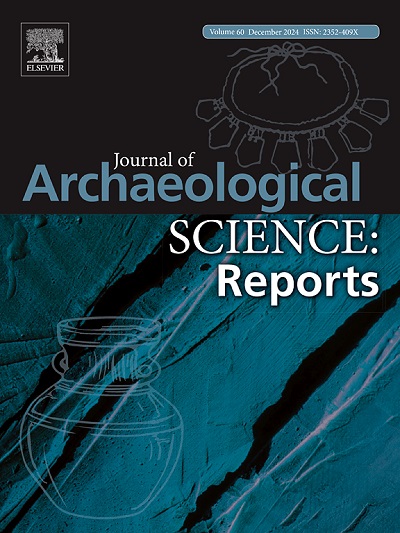对爱琴海中部达斯卡利奥(daskalio)早期青铜器时代遗址的宏观石器制品进行了使用磨损分析,揭示了它们作为金属加工工具的用途
IF 1.5
2区 历史学
0 ARCHAEOLOGY
引用次数: 0
摘要
daskalio的遗址位于爱琴海中部Keros岛西端的一个小岛上。发掘工作揭示了达斯卡利奥(daskalio)上一座扩建建筑群的遗迹,以及克罗斯(Keros)卡沃斯地区的一个仪式中心,其历史可追溯到青铜时代早期(EBA),约公元前2750-2250年。在达斯卡利奥发现了大量的宏观石器工具。使用磨损分析允许我们将它们定义为研磨,铸造,锤击和研磨或抛光工具。正在进行的结合低功率和高功率方法的使用磨损研究的初步结果表明,所检查的项目用于金属物体制造的不同阶段。此外,使用x射线荧光光谱(pXRF)分析在磨削板上发现了铅残留。我们的研究提供了关于在达斯卡利奥进行的工艺活动的初步结果,支持了该遗址可能在广泛的区域网络中充当专业工匠中心的假设。本文章由计算机程序翻译,如有差异,请以英文原文为准。
Use-wear analyses of macro-lithic artefacts from the Early Bronze Age site of Dhaskalio, central Aegean, unveil their use as tools for metalworking
The site of Dhaskalio is located on an islet at the western end of the island of Keros in the central Aegean. Excavations brought to light the remains of an extended building complex on Dhaskalio and a ritual centre in the Kavos area of Keros, dated to the Early Bronze Age (EBA), ca. 2750–2250 BCE. Finds on Dhaskalio include an abundant assemblage of macro-lithic tools. Use-wear analysis allows us to define them as grinding, casting, hammering and abrading or polishing tools. The preliminary results of an ongoing use-wear study combining low and high-power approaches suggest that the examined items were utilised in different phases of metal object manufacture. Additionally, lead residues have been found using X-ray fluorescence spectroscopy (pXRF) analysis on a grinding slab. Our research provides preliminary results concerning this craft activity undertaken at Dhaskalio, supporting the hypothesis that the site may have acted as a centre for specialised artisans within a broad regional network.
求助全文
通过发布文献求助,成功后即可免费获取论文全文。
去求助
来源期刊

Journal of Archaeological Science-Reports
ARCHAEOLOGY-
CiteScore
3.10
自引率
12.50%
发文量
405
期刊介绍:
Journal of Archaeological Science: Reports is aimed at archaeologists and scientists engaged with the application of scientific techniques and methodologies to all areas of archaeology. The journal focuses on the results of the application of scientific methods to archaeological problems and debates. It will provide a forum for reviews and scientific debate of issues in scientific archaeology and their impact in the wider subject. Journal of Archaeological Science: Reports will publish papers of excellent archaeological science, with regional or wider interest. This will include case studies, reviews and short papers where an established scientific technique sheds light on archaeological questions and debates.
 求助内容:
求助内容: 应助结果提醒方式:
应助结果提醒方式:


